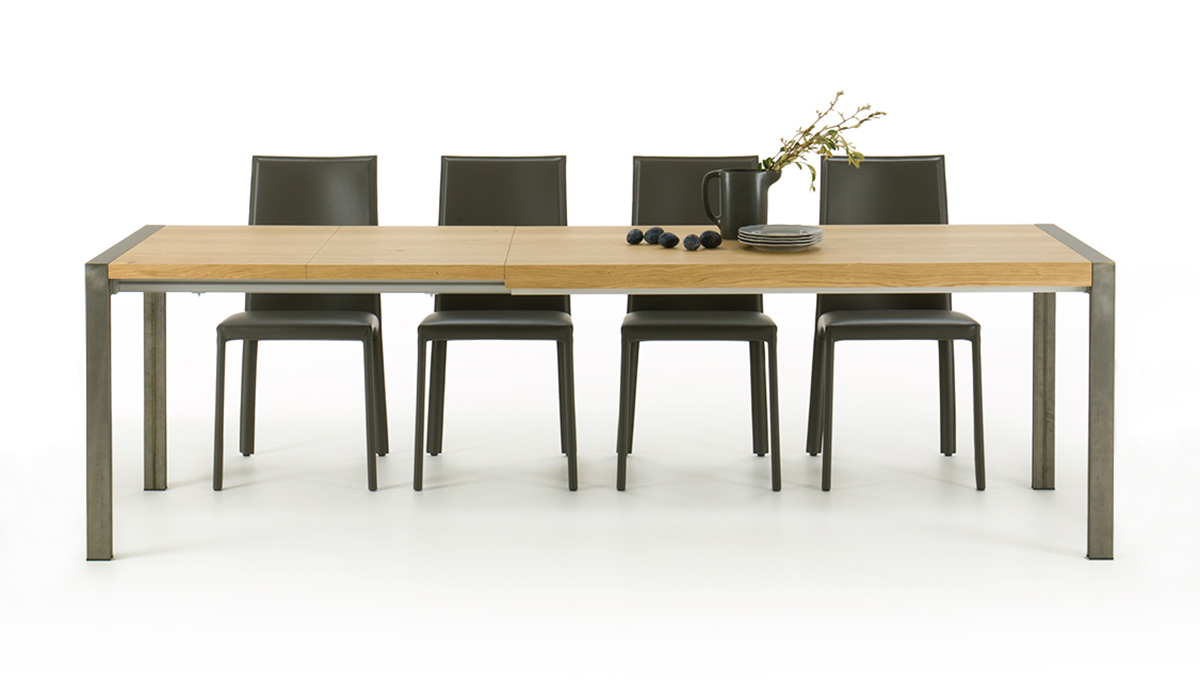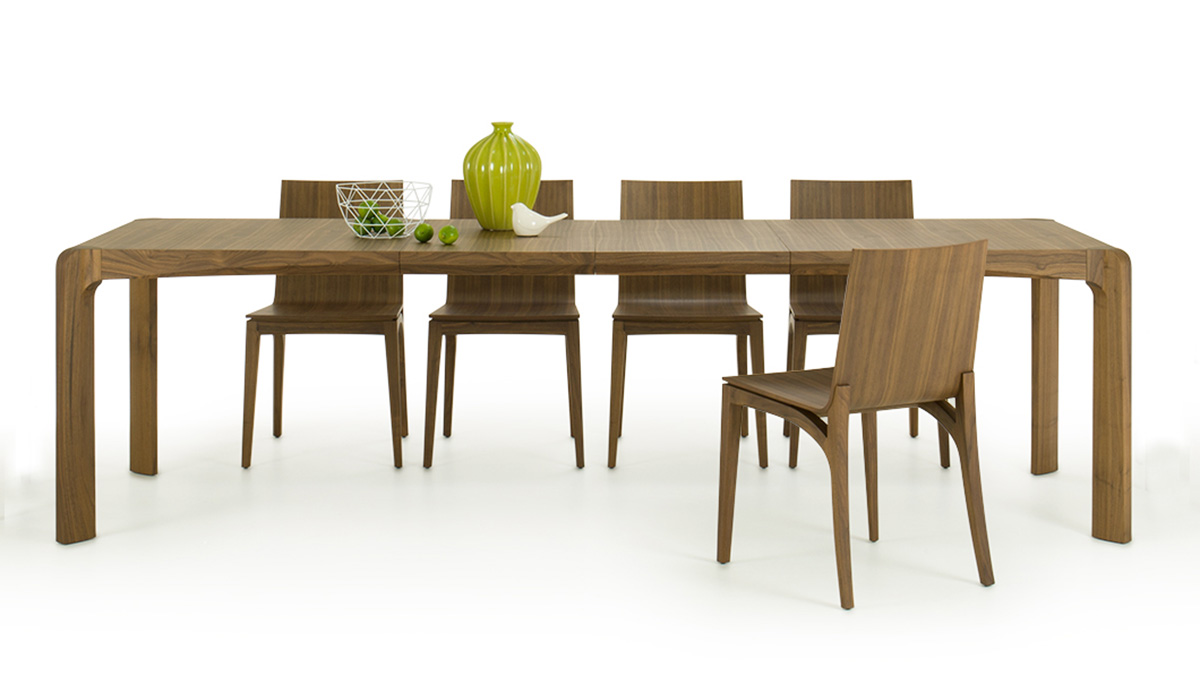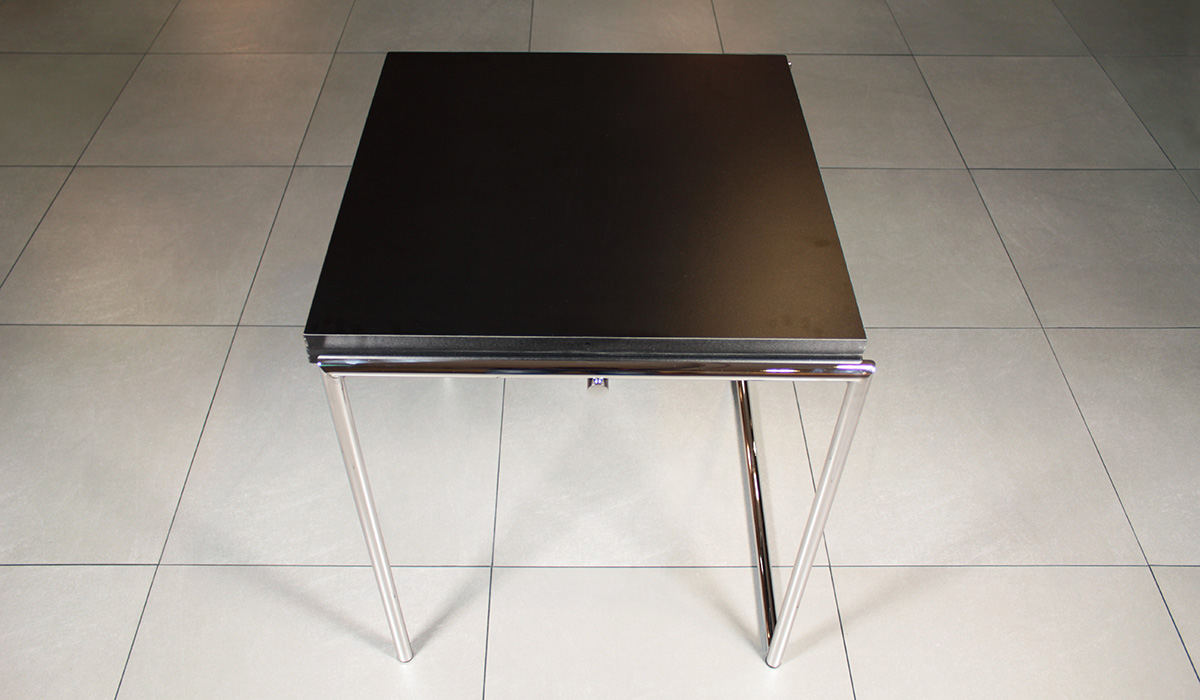Extension Systems for Extending Tables [GUIDE]
Within our extensive catalogue of Extending Tables, you can find several types of Extension Systems which are adapted to different types of tables and different types of living spaces.
Before examining the extension systems available for our tabletops, we are first going to look at the distinction between two types of base structures which can support the tabletop. There are structures available with Fixed Legs and structures with Mobile Perimeter Legs.
Fixed Legs are usually found on Rectangular, Square, Oval and Round Tables; with the central support fixed onto Oval, Square and Round Tables.
Mobile Perimeter Legs are usually found on Rectangular Tables and, in some cases, on Square Tables; these allow for particularly convenient extension systems, as no-one will ever have a table leg between their legs when the table is either open or closed, This makes it much easier to fit several people around the table.
So, let’s have a look now at the different Extension Systems.

Extending tables with asymmetrical lateral extensions

The extension system with Asymmetrical Lateral Extensions is typical of Rectangular Tables and is almost always paired with Mobile Perimeter Legs.
First, the structure is extended by moving the perimeter legs. Then, the extension leaves are extracted.
The extension leaves vary in width from 40 to 60 cm, and vary in quantity from 1 to 3. Normally, pulling out the extension leaves requires them to be manually lifted ‘over’ the base of the table which has already been extended; some models with single extension leaves are equipped with mechanical systems to assist with this process.





Extending Tables with Symmetrical Lateral Extensions

The extension system with Symmetrical Lateral Extensions is typical of Rectangular Tables and Square Tables and is almost always paired with Fixed Legs.
This system is usually associated with tables which are positioned in the centre of a room and which feature a tabletop composed of just one surface without any joints. The extension leaves, which vary between 30 and 50 cm in width, can be extracted independently. This flexibility allows you to extend the table according to your specific needs.
Some models have automatic Symmetrical Lateral Extensions which are up to 65cm each and allow you to double the length of a table with one simple movement. In this case, the tables will have Mobile Perimeter Legs.





Extending Tables with a Central Extension


The extension system with Central Extension Leaves is typical of Rectangular Tables and Round Tables and is almost always paired with Fixed Legs.
This system is usually associated with tables which are positioned in the centre of a room and which feature one joint on the tabletop: the 2 parts of the tabletop slide in opposite directions and allow the Central Extension Leaf to lift upwards (automatically or manually).
The extension leaf usually extends by approximately 50 - 60 cm, providing an additional 2 places at the table.





Extending Tables with Telescopic Extensions

The Telescopic Extension System is typical of Oval Tables and Round Tables and is almost always used with tables with a Central Support.
This system is usually associated with tables positioned in the centre of a room, which feature a tabletop composed of one surface with no joints. The Extension Leaves, which come in various shapes and sizes depending on the model, are pulled out simultaneously by a semi-automatic mechanism which is activated by a lever positioned underneath the tabletop.


Extending Tables with Folding Extensions

The “folding” extension system is typical of Square Tables and is almost always paired with Fixed Legs.
The Italian term for this type of extension system is “a libro” (book) because to extend the table you simply slide the tabletop sideways and then fold it open, just as you would open a book. This doubles the size of the original tabletop.
The fact that the original size of the table is doubled when you open it is definitely an advantage. However, we must also be aware that this system is not as flexible as some of the others we have seen, as it can’t just be opened half way.
An 80 x 80 cm square table therefore opens to 160 x 80 cm;
A 90 x 90 cm square table therefore opens to 180 x 90.




